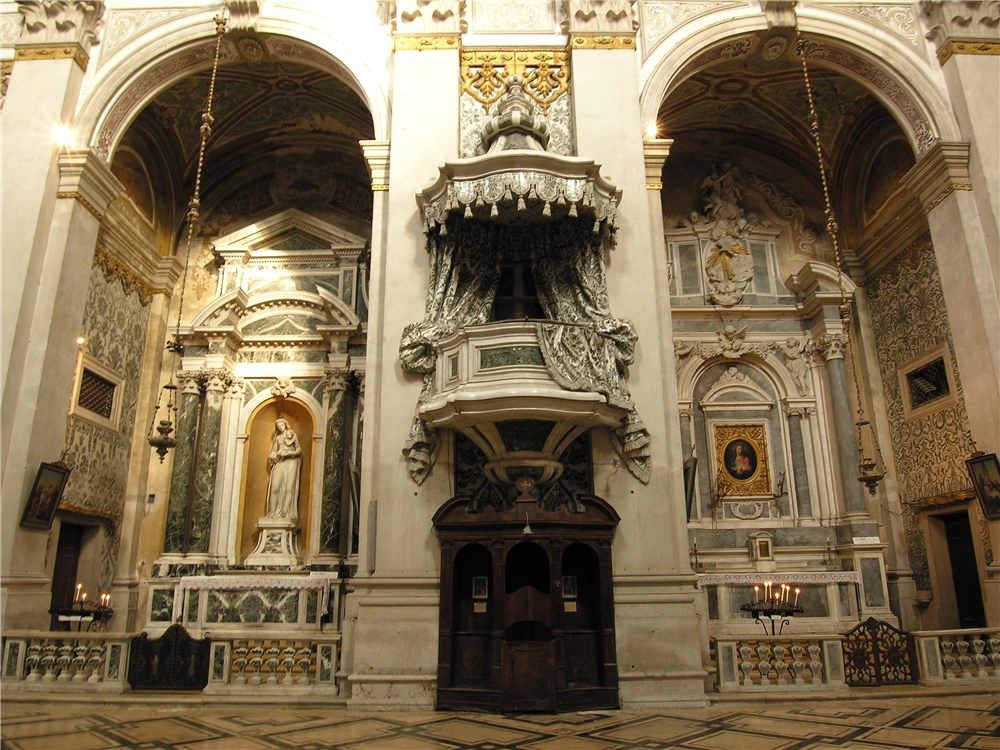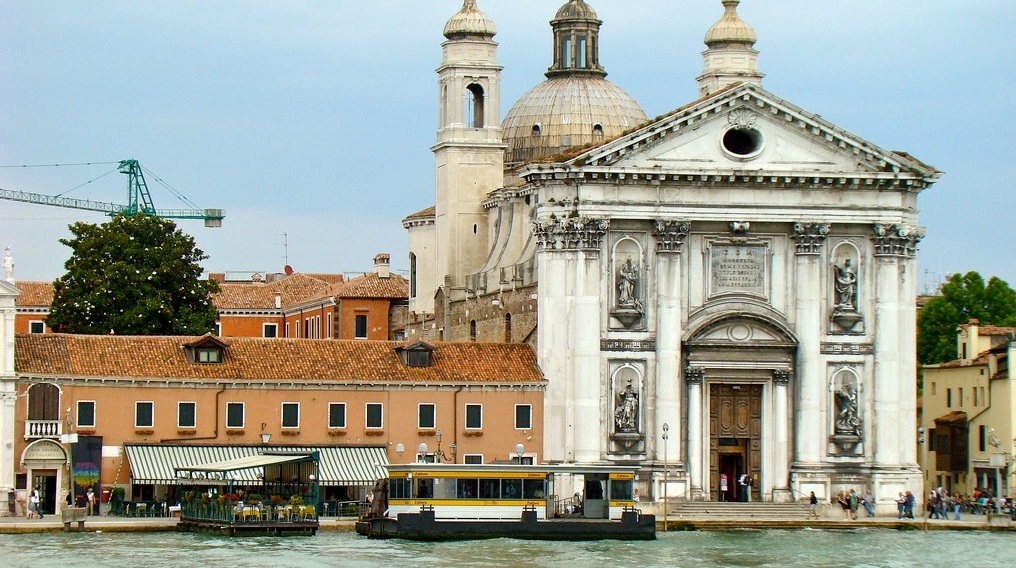Santa Maria del Rosario (St. Mary of the Rosary), commonly known as I Gesuati, is an 18th-century Dominican church in the Sestiere of Dorsoduro, on the Giudecca canal in Venice, northern Italy. The classical style building has a well-lit interior and is exceptional in preserving its original layout and Rococo decoration intact. The church and almost all its sculpture and paintings were created within a thirty-year period: construction began in 1725, the church was consecrated in 1743, and the last sculptural decoration was in place by 1755.
The religious order of the Jesuates, formally the Clerici apostolici Sancti Hieronymi was founded in Siena in the 14th century and had a presence in Venice by 1390. Its members were known as I poveri Gesuati (the poor Jesuates) because they frequently called on the name of Jesus; they had no connection with the Jesuits (I Gesuiti), whose church is in the north of Venice. They acquired some wealth from donations and legacies and from privileges granted by the state, including a monopoly on the distillation of wine. In 1493, they commenced the building of a small church on land fronting the Zattere (the fondamenta which borders the Giudecca Canal facing the Giudecca island), where the other buildings of the order stood. This church was originally dedicated to St. Jerome (San Girolamo) and later to Santa Maria della Visitazione (St. Mary of the Visitation) and became known as the church of the Visitation. Later, the order found it hard to recruit new members and a falling off in numbers combined with slackness in the performance of their duties led to its suppression by Pope Clement IX in 1668. In 1669 their property was put up for auction and acquired by the Dominicans, who installed themselves there in 1670. It became known as the Dominicans' place at the Gesuati and the Venetians have to this day continued to use the name.
The small church of the Visitation was not large enough for the Dominicans and by 1720 they had decided to build a new church, larger and of more architectural importance. They first engaged Andrea Musato, but he died in 1721 and they turned to Giorgio Massari, whose model for the new church was accepted in 1724. Rudolf Wittkower describes Massari as "the greatest Venetian architect of the first half of the 18th century".
Work started in 1725, while the Dominicans energetically sought to raise sufficient funds, both from charitable contributions and from religious institutions and benefaxctions. The funding was organised by a Father from Milan, Carlo Maria Lazzaroni, who was successful in raising a very large sum. This enabled them not only to build a magnificent church, but to embellish it with the work of the most famous painters and sculptors of the day.
Massari left untouched the existing church of the Visitation and built the new church further along the Zattere. He was responsible not only for the building itself but also for its interior fittings and decoration and for commissioning the paintings and sculpture.He did not attempt too original a building, thinking that he could best please his patrons by a design based on those of his famous predecessors, in particular Palladio, whose two churches of San Giorgio Maggiore and Il Redentore were within sight of the new church. The facade of the church was derived from the central portion of the facade of San Giorgio Maggiore, while the basic idea for the interior came from the Redentore.











